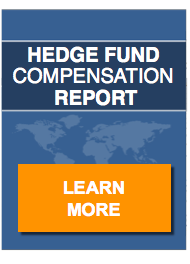Declining assets under management, high profile redemptions, demonizing by major party candidates, and embarrassing headlines that result from the criminal actions of a few bad apples, culminate in what can only be described as a marketing nightmare for the hedge fund industry.
A Perfect Storm
The proximate causes for these horrendous headwinds are threefold.
First, a near record bull run, fostered in large part by Fed monetary policies, specifically quantitative easing, coupled with an unprecedented era of near zero interest rates, topped with a hefty serving of uncertainty as to when rates will rise. Unusual market interventions by the central banks of Europe, Japan and China also played a role.
Secondly, a populist assault on wealth, with hedge fund founders framed as the poster boys of income inequality, courtesy of the fourth estate and the political class.
Thirdly, ever present human greed, which always achieves greater visibility during difficult economic times. This heightened visibility is evident in media headlines, not only regarding criminal acts, but also including assaults on hedge fund fee structures and the personal wealth of hedge fund professionals.
Hedge Funds Are Squarely in the Line of Fire
No one envies the position in which hedge funds find themselves today. Returns are well short of expectations, which weaken traditional arguments that lend support to hedge fund management and performance fee structures.
Institutional investors are taking flight and if the trend isn’t reversed, the hedge fund industry is in danger of becoming a mere shadow of its former self.
Globally, the valuations of traditional asset classes, such as bonds, equities and real estate are stretched to the breaking point. Central bank monetary policies have encouraged investors to chase returns. As a result, yields on most asset-classes have reached unprecedented lows.
Crafting a Strategy
It is in this context that hedge funds must make the case to their investors that this is exactly the environment in which hedge funds will rebound.
Of course, not every hedge fund will rebound. As Blackstone’s president, Tony James said in his interview with Bloomberg Canada TV, “The $2.9 trillion hedge-fund industry may lose about a quarter of its assets in the next year as performance slumps.”
In a quarter of a century, the number of hedge fund firms has increased from 610 to more than ten thousand—an increase of more than 1500 percent. This level of competition has diluted investment opportunities as well as the pool of outstanding talent.
Whether you concur with James or not, the question the industry needs to address is, how do we stanch the bleeding?
The answer to this question will vary with each hedge fund firm, its track record, its strategy, its investment team and its manager. However, one thing is certain, the success of a hedge fund in retaining and attracting investors will be determined as much by its marketing strategy as its performance.


